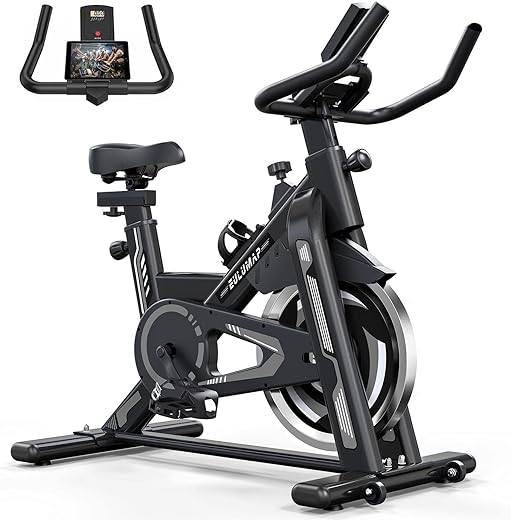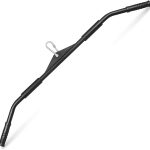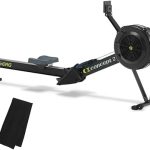The step-by-step guide on how to use interval training on a stationary bike aims to provide a comprehensive overview of the benefits and techniques of incorporating intervals into your stationary bike workout routine. It covers the basics of using a stationary bike, the concept of interval training, and offers a structured approach to implementing intervals effectively. The guide is designed to help readers optimize their workouts, improve fitness levels, and achieve their desired health goals through the use of interval training on a stationary bike.



Understand Interval Training
Learn about the concept of interval training by researching online or consulting fitness resources. Understand how interval training involves alternating between high-intensity exercise and periods of rest or lower intensity. Implement interval training into your workout routine to improve cardiovascular fitness and burn more calories effectively. Remember to start gradually and gradually increase the intensity as you progress.
Set Up the Stationary Bike
Adjust the seat height by lifting the lever under the seat and sliding it up or down to align with your hip level. Position the handlebars by loosening the knob and moving them to a comfortable reach. Set the resistance level by turning the knob to increase or decrease the difficulty of pedaling. Test each adjustment by sitting on the bike and pedaling to ensure proper fit and comfort.
Warm-Up
- Begin by mounting the bike and pedaling at a moderate pace for 5-10 minutes to increase blood flow.
- Gradually increase your pedaling intensity to a comfortable level, aiming to break a light sweat.
- Pay attention to your body’s response and ensure you feel loose and ready to start the interval training session.
- Focus on smooth and controlled movements to ease into the workout without putting excessive strain on your muscles and joints.
Interval Settings
Choose your interval settings by adjusting the duration of high-intensity and low-intensity intervals to match your fitness level and objectives. Start by setting a challenging high-intensity interval that pushes your limits without causing fatigue too quickly. Next, adjust the low-intensity interval to provide adequate recovery time while maintaining an elevated heart rate. Experiment with different interval durations to find the optimal combination that suits your fitness goals and abilities.
Begin the Workout
- Start by adjusting the stationary bike seat and handlebars to the correct height for comfort.
- Begin pedaling at a moderate pace to warm up your muscles.
- Increase the resistance on the bike and sprint as fast as you can for 30 seconds.
- Slow down to a comfortable pace for a 1-minute recovery period. Repeat this cycle for the desired duration of your interval session.
Monitor Your Progress
Track your time, speed, and resistance levels consistently as you complete each interval. This will help you gauge if you are pushing yourself enough to see progress. For example, note down how long it takes you to complete a set distance, the speed at which you are cycling, and the resistance level you are using. Compare these metrics over time to ensure you are challenging yourself appropriately and making improvements.
Cool Down
- After completing your workout, walk or jog at a slower pace for about 5-10 minutes to gradually bring down your heart rate.
- Incorporate stretching exercises targeting the major muscle groups you worked during your workout, holding each stretch for 15-30 seconds.
- Hydrate by drinking water to replenish fluids lost during exercise and aid in muscle recovery.
- Consider using a foam roller or massage tool to alleviate muscle tightness and prevent soreness.
Remember, the cool-down phase is essential for your body to recover and transition back to a resting state effectively.
Hydrate and Stretch
Drink plenty of water throughout the day to stay hydrated and aid in muscle recovery. Aim to drink at least 8-10 glasses of water daily to keep your body functioning optimally. After hydrating, incorporate stretching exercises into your routine to improve flexibility and prevent injury. Perform stretches gently, holding each position for 15-30 seconds to effectively lengthen your muscles.
Repeat and Progress
Incorporate interval training into your stationary bike sessions. Start with 30 seconds of high-intensity pedaling, followed by a 1-minute recovery period at a moderate pace. Gradually increase the high-intensity intervals to 45 seconds, then 1 minute, as you build your stamina.
Challenge yourself by adjusting the resistance level during each interval. Begin with a moderate resistance and gradually increase it as your fitness improves. Remember to maintain good form and stay hydrated throughout your workout.
Maximizing Your Stationary Bike Workout
In conclusion, incorporating interval training on a stationary bike can maximize workout efficiency, boost cardiovascular health, and enhance overall fitness levels. It is a versatile and time-effective way to achieve fitness goals. Encouraging readers to integrate interval training into their routine can lead to significant improvements in their physical well-being. Make the most of your stationary bike workouts by embracing the power of interval training!
Essential Equipment List
Maximize Your Workout
Subheading: Getting the Most Out of Your Stationary Bike Workout
- Adjust the seat height to ensure your knees are slightly bent when the pedal is at its lowest point
- Start with a low resistance level and gradually increase as you get more comfortable
- Focus on maintaining proper posture by keeping your back straight and shoulders relaxed
- Use the stationary bike for at least 20-30 minutes to build stamina and endurance
- Monitor your heart rate and adjust your intensity accordingly to prevent overexertion
Pedal Your Way to Fitness: Stationary Bike FAQs
Using a stationary bike for exercise has several benefits, including improving cardiovascular health, promoting weight loss, increasing leg strength and endurance, and being a low-impact form of exercise that is gentle on the joints. Additionally, stationary bikes are convenient and easy to use, allowing for a consistent workout routine regardless of the weather or time constraints.
Yes, there are different types of stationary bikes available. The common types include upright stationary bikes, recumbent stationary bikes, and indoor cycling bikes. Upright bikes resemble traditional bicycles and provide a more intense workout. Recumbent bikes have a wider seat and back support, offering a more comfortable workout. Indoor cycling bikes, also known as spin bikes, are designed for intense cardio workouts and mimic the feel of riding a road bike. Each type of stationary bike offers distinct features and benefits to cater to different preferences and fitness goals.
To adjust the resistance on a stationary bike, you typically need to turn the resistance knob or lever that is usually located near the handlebars or on the bike’s console. By turning the knob clockwise, you can increase the resistance level, and by turning it counterclockwise, you can decrease the resistance level. Some stationary bikes may also have preset resistance levels that you can select using the bike’s console. The resistance adjustments may vary depending on the specific model and type of stationary bike you are using.
Yes, stationary bikes can often be used as part of a rehabilitation program for injuries. Cycling on a stationary bike can help improve cardiovascular fitness, strengthen muscles, and increase range of motion without putting excessive stress on the injured area. It can be particularly beneficial for lower body injuries, such as knee or hip injuries. However, it’s important to consult with a healthcare professional or physical therapist to determine if using a stationary bike is appropriate for your specific injury and to get guidance on how to use it safely and effectively in your rehabilitation program.
Yes, there are specific workouts and programs designed for stationary bike users. These can include interval training, hill climbs, endurance rides, and virtual cycling classes offered by various fitness apps and online platforms. These programs are tailored to help users improve their cardiovascular fitness, endurance, and strength while using a stationary bike.
For optimal fitness results, it is recommended to use a stationary bike for at least 3-5 times a week. The duration of each session should be around 30-60 minutes, depending on your fitness level and goals. Consistency and intensity are key factors in achieving fitness results when using a stationary bike. It is also important to listen to your body and gradually increase the intensity and duration of your workouts to avoid overtraining.
Yes, there are safety considerations to keep in mind when using a stationary bike. Some important factors to consider include adjusting the bike to your body size and ensuring proper form to prevent strain or injury. It is also crucial to wear appropriate footwear and clothing, stay hydrated, and pace yourself according to your fitness level to avoid overexertion. Lastly, always make sure the bike is on a stable surface and that all safety features are in place before starting your workout.
When choosing a stationary bike, there are several features to consider to ensure you select the right one for your needs. Some important features to look for include:
- Adjustability: Look for a bike that allows you to adjust the seat height, handlebar position, and resistance levels to ensure a comfortable and customized workout.
- Resistance type: Stationary bikes can have different resistance mechanisms such as magnetic, friction, or air. Magnetic resistance is generally quieter and provides smoother resistance changes.
- Display console: A bike with a clear and easy-to-read display console that tracks your workout metrics like speed, time, distance, and calories burned can help you monitor your progress.
- Comfort: Look for a bike with a comfortable seat and ergonomic design to prevent discomfort or pain during longer workout sessions.
- Build quality: Ensure the bike is sturdy and made of durable materials to provide stability and longevity.
- Programs and connectivity: Some stationary bikes come with built-in workout programs and connectivity features like Bluetooth or USB ports to enhance your workout experience.
By considering these features, you can choose a stationary bike that meets your fitness goals and preferences.

















